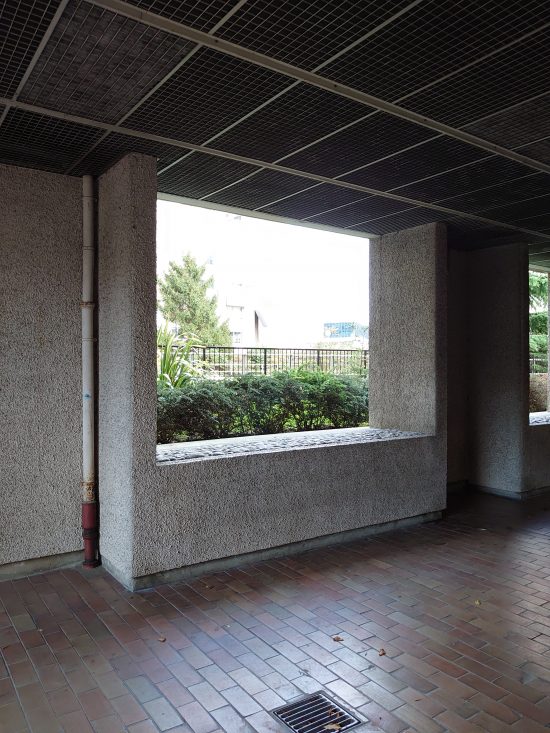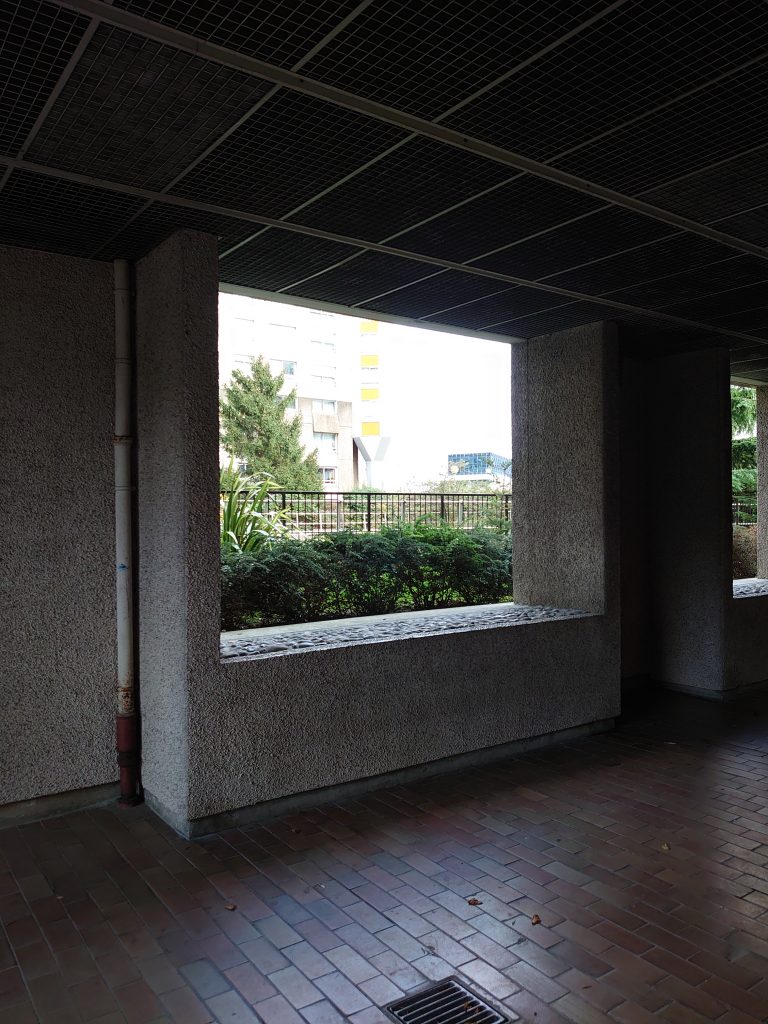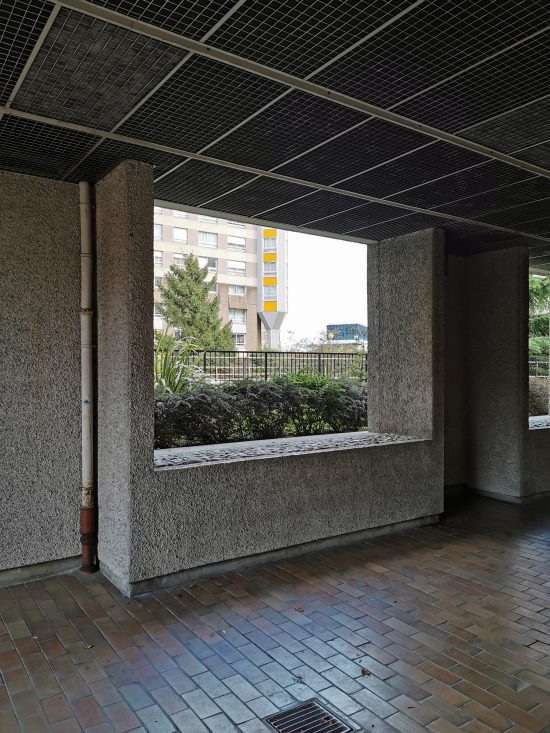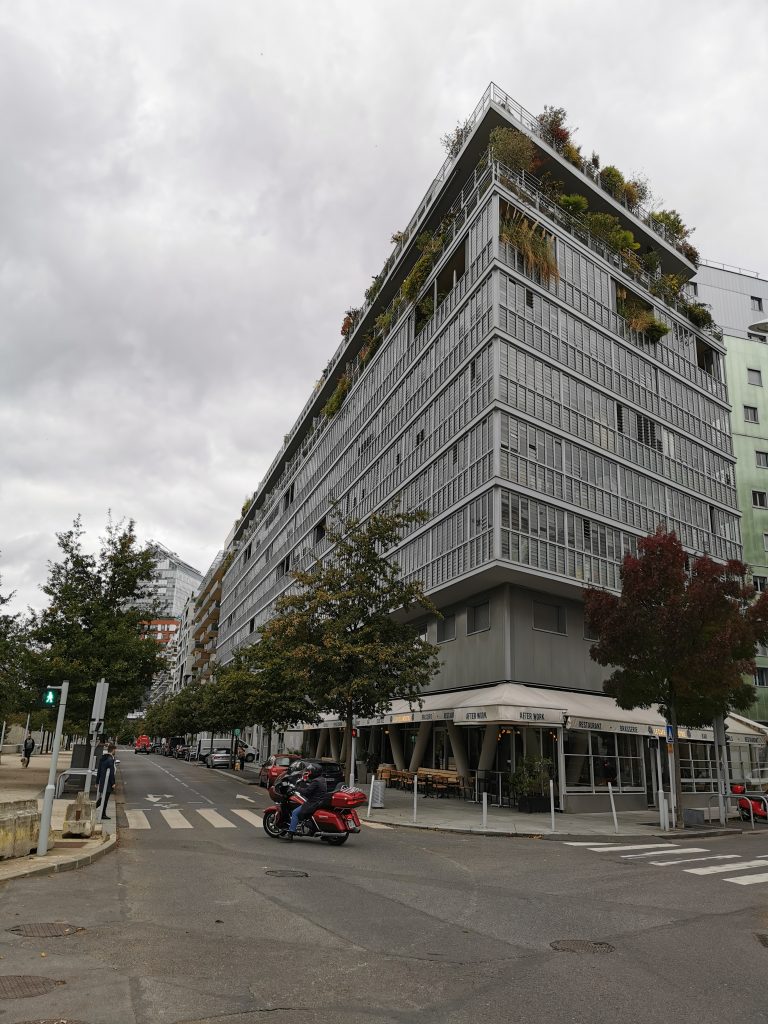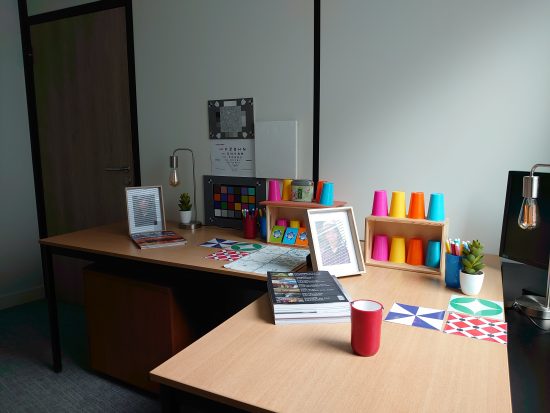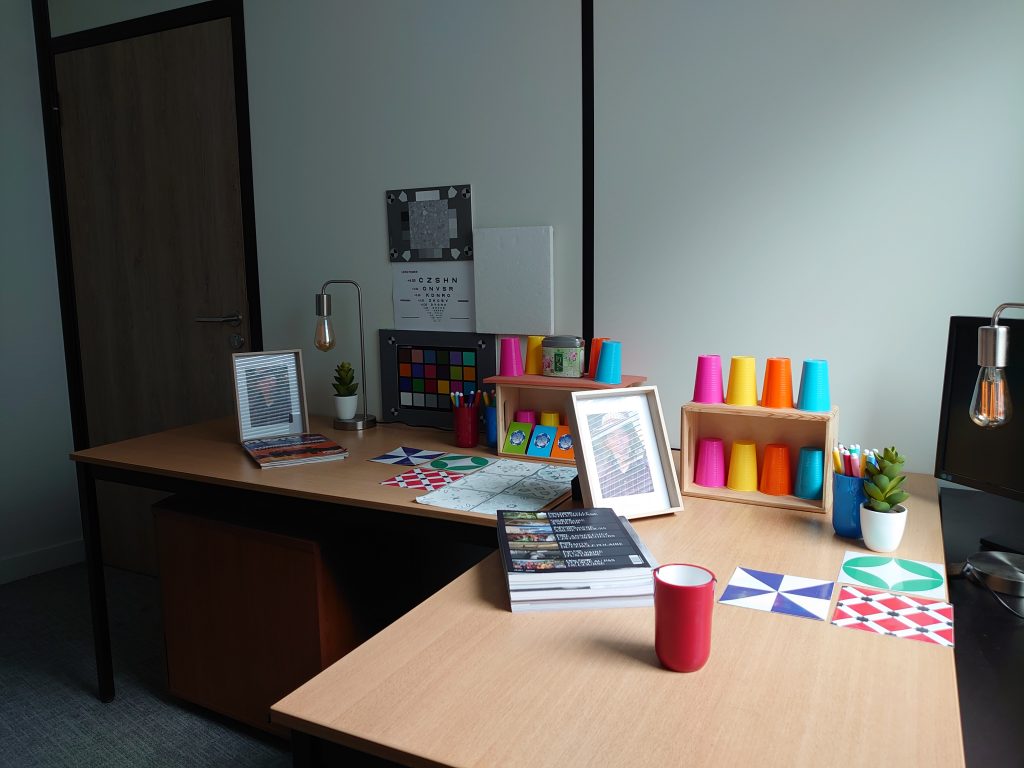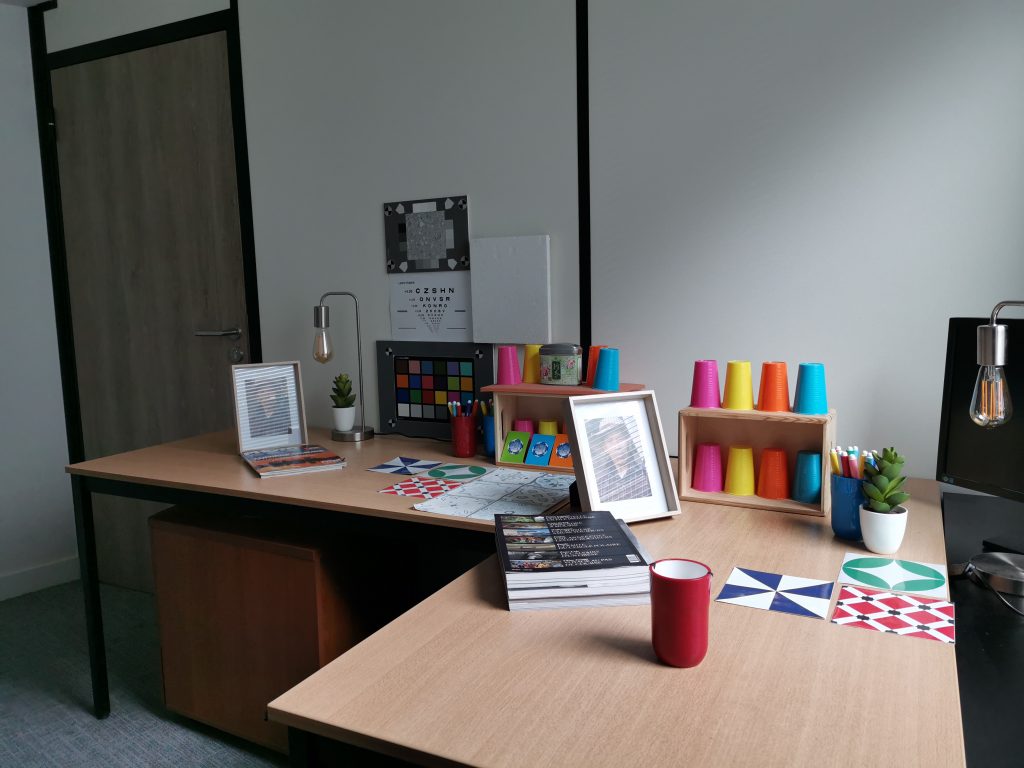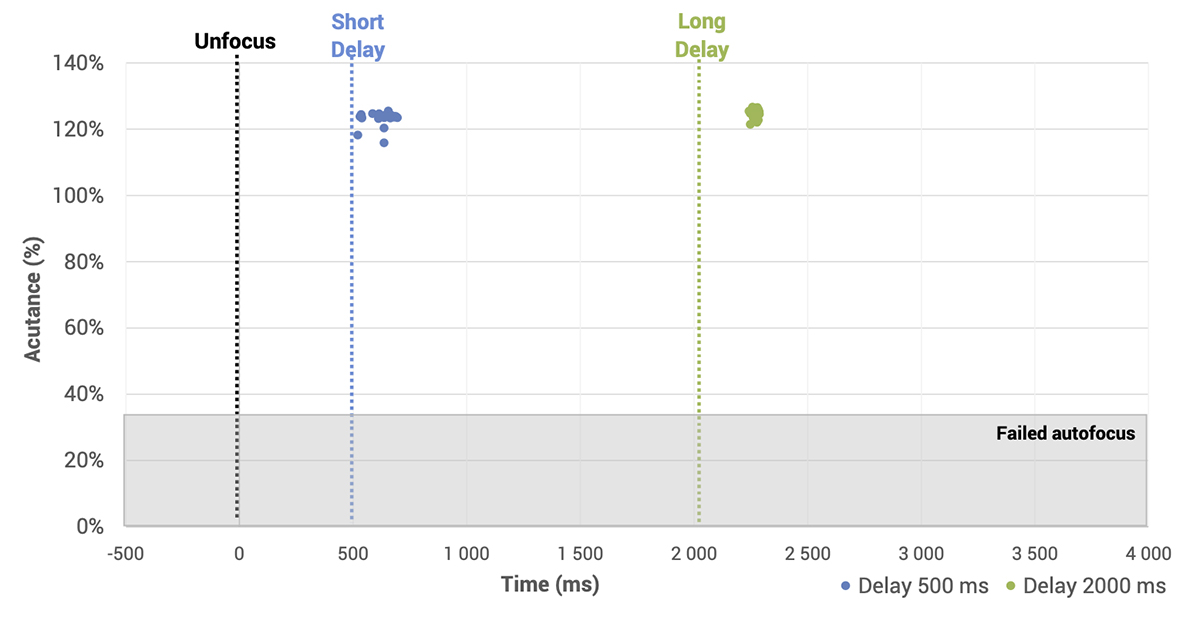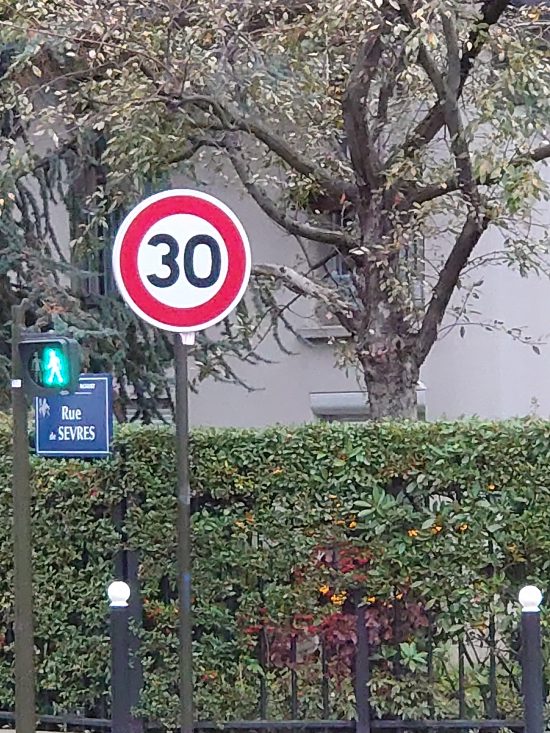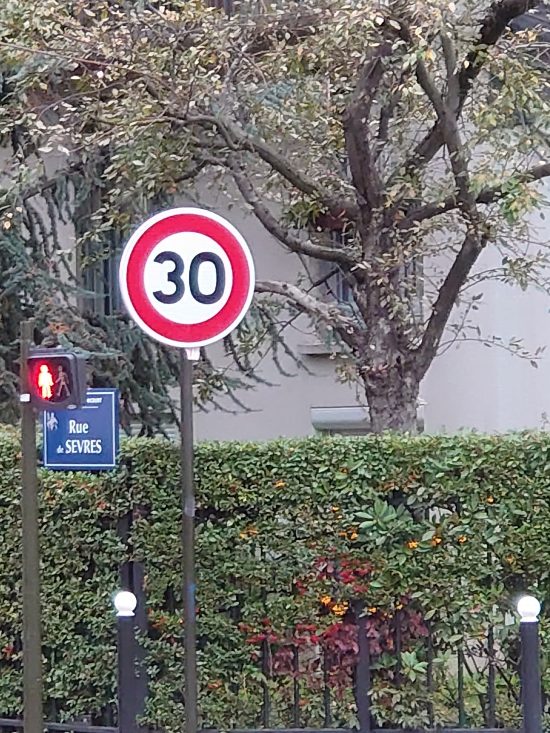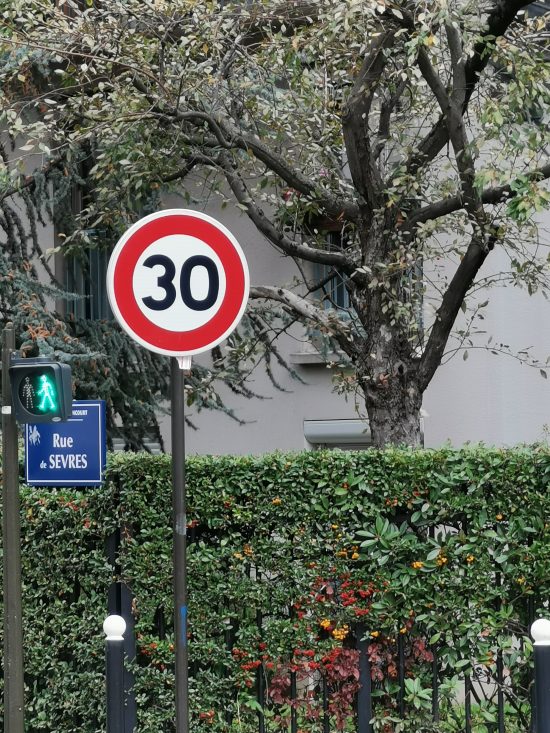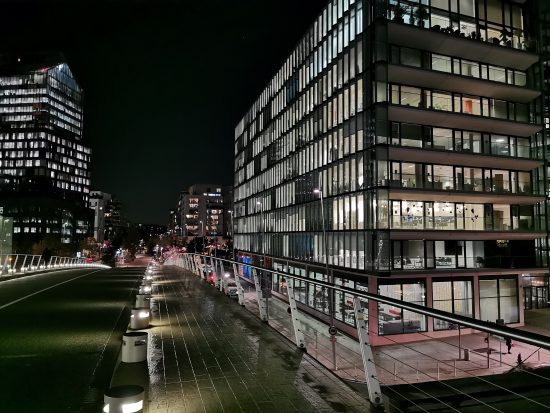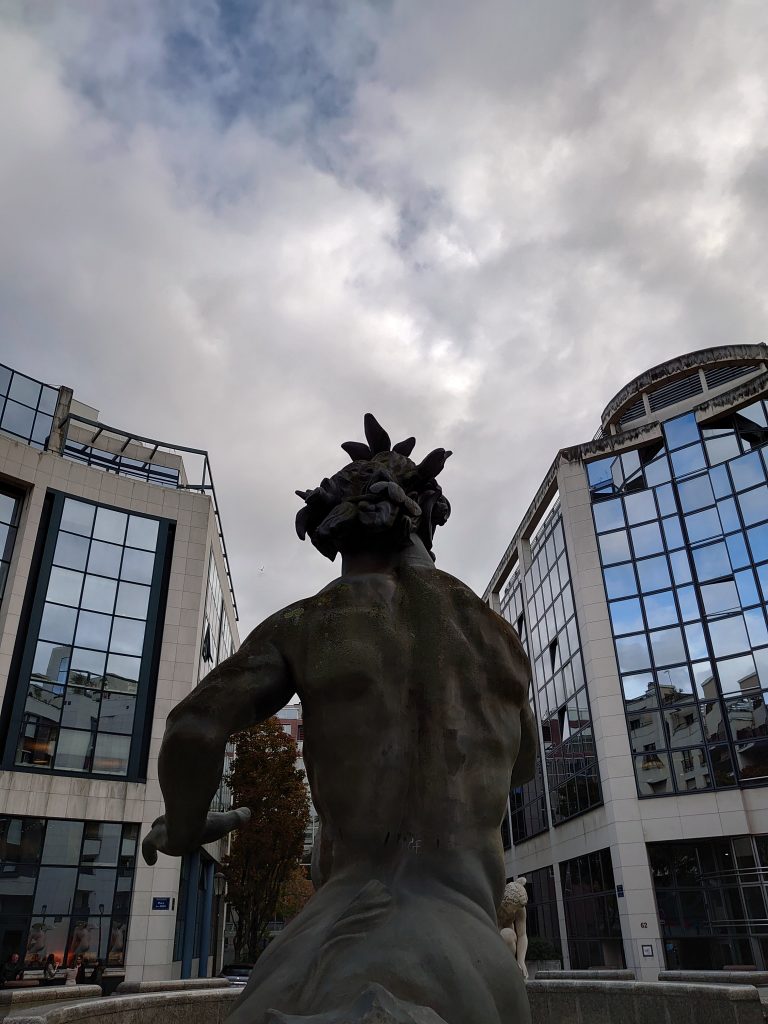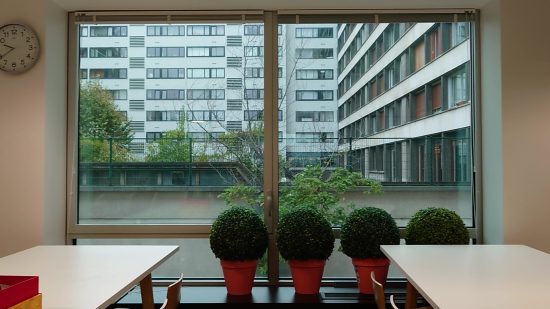Announced in September 2019, the Sony Xperia 5 is the Japanese technology giant’s latest compact flagship, intended as a more affordable, pocket-friendly alternative to the full-sized Xperia 1. Key features on the Xperia 5 include a 6.1-inch OLED display, as well as the high-end Snapdragon 855 chipset with 128GB of internal storage and 6GB RAM. Storage is expandable up to 1TB via micro SD.
The main camera boasts the same triple sensor and lens setup as on the Xperia 1. All three sensors offer 12MP resolution, with a large 1/2.55-inch sensor for the main camera, and a smaller 1/3.4-inch sensor for each of the ultra-wide and telephoto modules. The main sensor is coupled to a 26mm-equivalent f/1.6 aperture lens; there’s also an 16mm-equivalent f/2.4-aperture ultra-wide angle lens, and a 52mm-equivalent f/2.4-aperture lens offering x2 optical zoom shots.
Other features include 5-axis optical image stabilization (OIS) and predictive Dual Pixel PDAF autofocus on the main and telephoto cameras, eye-tracking autofocus, HDR, and LED flash. 4K video is available for 2160p@24/30fps capture on the Xperia 5, but the Sony’s 5-axis gyroscope-enabled OIS only kicks in for HD video recording at 1080p@30fps.
Let’s see how the image quality from the more affordable Xperia 5 compares to the flagship Xperia 1 in our latest review.
Key camera specifications:
- Triple camera
- Primary: 12MP 1/2.55-inch sensor with 1.4µm pixels and 26mm f/1.6-aperture lens
- Ultra-wide: 12MP 1/3.4-inch sensor with 1.0µm pixels and 16mm f/2.4-aperture lens
- Telephoto: 12MP 1/3.4-inch sensor with 1.0µm pixels and 52mm f/2.4-aperture lens
- Predictive Dual Pixel PDAF autofocus & 5-axis OIS (main & telephoto)
- LED flash, HDR, eye-tracking
- 4K 24/30fps video with HDR
- Full HD 1080p@30fps video with 5-axis gyro-EIS
About DXOMARK Camera tests: For scoring and analysis in our smartphone camera reviews, DXOMARK engineers capture and evaluate over 1600 test images and more than 2 hours of video both in controlled lab environments and in natural indoor and outdoor scenes, using the camera’s default settings. This article is designed to highlight the most important results of our testing. For more information about the DXOMARK Camera test protocol, click here. More details on how we score smartphone cameras are available here.
Test summary


Securing an overall DXOMARK Camera score of 95, the Sony Xperia 5 delivers very similar results for both photos and videos compared to the Xperia 1—unsurprising, given they share the same camera hardware. The results put both Sony smartphones some ways behind the top performers in our database, with image quality more on par with slightly older middle-ranking devices, such as Apple’s iPhone 8 Plus (94) or the Samsung Galaxy Note 8 (94).
Achieving a Photo score of 101, the Xperia 5 is fractionally ahead of the Xperia 1 at 99, thanks to some very modest improvements for exposure, texture, artifacts, night, and wide-angle shots. Conversely, the Xperia 5 scores very slightly lower in our color, autofocus, and zoom categories, and there’s a more significant decline in the effectiveness of bokeh shots shot with the less-expensive Xperia 5. On the whole, however, the differences are marginal, and essentially the two Sony devices offer comparable image quality.
The same is true for video performance. Tested in 1080p@30fps mode with stabilization enabled, the Xperia 5 achieved a video score of 83, compared to 84 for the Xperia 1. Video artifacts are fractionally improved on the latest device, but scores for video color and stabilization are slightly down. Video exposure between the two devices is almost identical, though, and with those other relatively insignificant differences in scores, we can again say they offer the same overall image quality for video capture.
For still photos, the example below is a good illustration of the Xperia 5’s strengths and weaknesses. Target exposure is accurate, and the overall result is acceptable, but limited dynamic range is a common problem that often leads to highlight clipping in bright areas like the sky. Color rendering is also an opportunity for future improvement, with a slightly red/pink white balance often evident in outdoor images.
Very challenging high-contrast scenes emphasize the limited dynamic range. A slightly brighter exposure from the Xperia 5 brings more detail into the darker areas for these images, but at expense of greater highlight clipping in the bright areas than the Xperia 1. In comparison, top-performing devices such as the Huawei P30 Pro are able to maintain good detail in both areas.
The Xperia 5’s brighter exposure strategy ensures a nicer exposure on the subject compared to the Xperia 1 in our tricky backlit portrait test scene. The limited dynamic range is again clearly evident, but the Xperia 5 does a pretty good job with indoor target exposures, which are slightly brighter than the Xperia 1’s. While the Huawei P30 Pro’s HDR processing is clearly superior for maintaining highlight detail outside the window, the portrait is underexposed and a little disappointing compared to the Xperia 5 example.
Overall color rendering is fairly pleasant on the Xperia 5, with nice saturation in both indoor and outdoor images. Results are very comparable to the Xperia 1, and both devices display a slightly red/pink color cast in outdoor shots. In isolation, the white balance casts aren’t offensive, but become more apparent when compared to neutral results from competitors like the Huawei P30 Pro. Happily, white balance is more accurate on the Xperia 5’s indoor images, and it generally controls color shading well, although it’s more evident in outdoor images from the Xperia 5 than it was for the Xperia 1—which explains the slightly lower score for color.
Detail preservation is slightly improved on the Xperia 5 compared to the Xperia 1. In our lab measurements, the Xperia 5 recorded high acutance levels of over 80% in bright light (1000 lux), dropping slightly to just below 70% only in extreme low light (1 lux) in static scenes. Outdoor images therefore display good texture rendering with plenty of fine details, and although edges aren’t quite as well defined in comparison to the Huawei P30 Pro, Sony shooters won’t have too many complaints in this category.
Noise is well controlled in flat areas in outdoor images, too, and the Xperia 5 is marginally better than the Xperia 1 for noise reduction in low light. That said, a lot of noise remains visible in dark areas in low-light shots and very noisy edges are also evident in indoor images, with noticeable differences in noise between flat areas and contrast edges. Again, the Sony devices aren’t as smooth as such top performers as the Huawei P30 Pro, which handles noise better in the dark parts of low-light images and boasts cleaner contrast edges.
A solid score for autofocus, thanks to the Xperia 5’s predictive PDAF system consistently delivering in-focus shots during our benchmark lab analysis and while shooting test scenes on location. It didn’t quite achieve our top autofocus score due to slightly slow response times when requesting focus. It’s far from the worse we’ve seen, but it’s not instantaneous, with the device sometimes taking up to around 250ms (one-quarter second) to lock on in all lighting conditions.
Automatic geometric distortion correction on the latest Xperia 5 is the main difference for ultra wide-angle shots compared to the Xperia 1, which is a nice bonus for budding architecture or landscape smartphone photographers. Unfortunately, however, distortion correction is applied regardless of the subject matter, so if you’re trying to shoot a big group portrait with the ultra-wide camera, the correction results in anamorphosis (or stretching) of elements close to the edge, as well as a noticeable loss of detail in the outer field. Overall, the image quality from the Xperia 5’s ultra-wide camera is an area for future improvement, with lots of color fringing, a strong magenta white balance cast in outdoor images, and very high levels of noise.
At close range (~2x magnification), the best zoom examples from the Xperia 5 show a modest improvement over the Xperia 1. Unfortunately, focus and exposure instabilities let the new Sony device down a little during zoom testing, resulting in a lower overall score. At medium range (~5x magnification), there’s very little difference between the two Sony devices, with images suffering from strong denoising that results in unrealistic detail and texture rendering. Colored fringing is also noticeable, as well as noisy edges and ringing artifacts, which are very prominent at close inspection. You can see that the best zoom devices, such as the Huawei P30 Pro, are capable of improved contrast and color, as well as better texture rendering for sharper images with fewer edge artifacts.
Sony has clearly modified the depth estimation algorithms between the Xperia 1 and 5, with mixed success. The Xperia 1 is more cautious in complex areas when it’s not confident of accurate estimation and blurs the whole area, often leading to a loss of detail in the subject. Admirably, the Xperia 5 attempts to keep these complex areas sharp, but with no dedicated depth-sensing sensor, depth estimation is quite poor, with obvious segmentation problems resulting in partially-blurred areas (such as the hand in the example below), as well as in obvious edge artifacts. It does a better job around less-complex areas, though, and although the blur effect isn’t particularly strong and the bokeh highlights lack a little contrast, the effect pleasant overall.
Sony’s Xperia devices don’t offer a dedicated Night mode for improved results in low light, but results remain broadly acceptable, with similar strengths and weaknesses in outdoor shots. Target exposures are accurate, but limited dynamic range leads to both highlight and shadow clipping, and a similar red/pink white balance color cast is usually evident. Very noisy edge artifacts also occur, and autofocus isn’t quite as reliable when shooting low-light cityscapes or portraits, with some shots out of focus. Using flash, portraits are generally well exposed, but in very dark environments the ambient light tends to be noticeably underexposed; and when mixing flash with strong artificial light sources, white balance turns very yellow, which can make skin tones look unnatural.
We deduct points for obvious artifacts or image quality flaws visible in images. The main penalties we applied to the Xperia 5 were for strong ringing, which is visible in all images, as well as for some noisy edges, lens shading, and color quantization. Maze and moiré artifacts are occasionally visible in high-frequency areas, too, and a lens-tilt effect results in slight blurring and obvious loss of sharpness in the outer field.
Achieving a DXOMARK Video score of 83 points, performance is again very similar between the Xperia 5 and the Xperia 1, which achieved a Video score of 84. Target exposures are generally accurate and exposure adaptation is smooth under changing lighting conditions, with no glaring steps or jumps as you continue recording. Dynamic range is again limited, so expect to see some highlight clipping in bright outdoor videos; and although some white balance instabilities occur, overall color rendering is fairly pleasant.
In 1080p mode with stabilization, detail isn’t quite as strong as we saw for stills, but texture and edge definition remain pretty good in bright light, and hold up reasonably well in indoor videos, too. Noise is generally well controlled, so video files are generally clean of very distracting noise in flat or dark areas, but detail preservation drops off significantly in low light, with recorded acutance down to just 20% at 5 lux.
Scores for the Xperia 5’s 5-axis gyroscope-based stabilization are fractionally below those of the Xperia 1, but it does a good job of keeping residual motion under control in static handheld videos and with modest walking movements. The judder effect is noticeable in outdoor videos, however, and frame shifts occasionally occur with panning motions, when the video sometimes seems to miss a beat.
Conclusion
More forgiving on the wallet and retaining the same triple-camera setup as the flagship Xperia 1, the Xperia 5 will be welcomed by budget-conscious Sony smartphone enthusiasts after ultra-wide and telephoto capabilities in their phone. Aside from a few minor differences, image quality is broadly comparable between the two Xperia devices, with the exception of geometric distortion in ultra-wide shots and changes to the depth-sensing algorithms in bokeh mode. Although opportunities for improvement remain in all aspects of the Xperia’s performance—if Sony wants to challenge the top ranked devices in our database—they remain capable devices for the most part; and dedicated cameras for ultra-wide, wide, and telephoto shots will add some versatility to your shooting options.
Photo
Pros
- Accurate target exposure
- Well-controlled noise
- Neutral white balance indoors
- Good texture and noise in night shots
Cons
- Limited dynamic range
- Inaccurate color outdoors
- Noisy edge artifacts indoors
- Strong ringing artifacts
- Color fringing and a loss of detail in wide shots
- Depth estimation failures in bokeh shots
Video
Pros
- Accurate exposure and smooth adaption
- Well-controlled noise
- Effective stabilization
Cons
- Autofocus instabilities
- Limited dynamic range
- Noticeable judder outdoors
- Frame shifts during panning
- White balance instabilities
The post Sony Xperia 5 camera review appeared first on DXOMARK.

